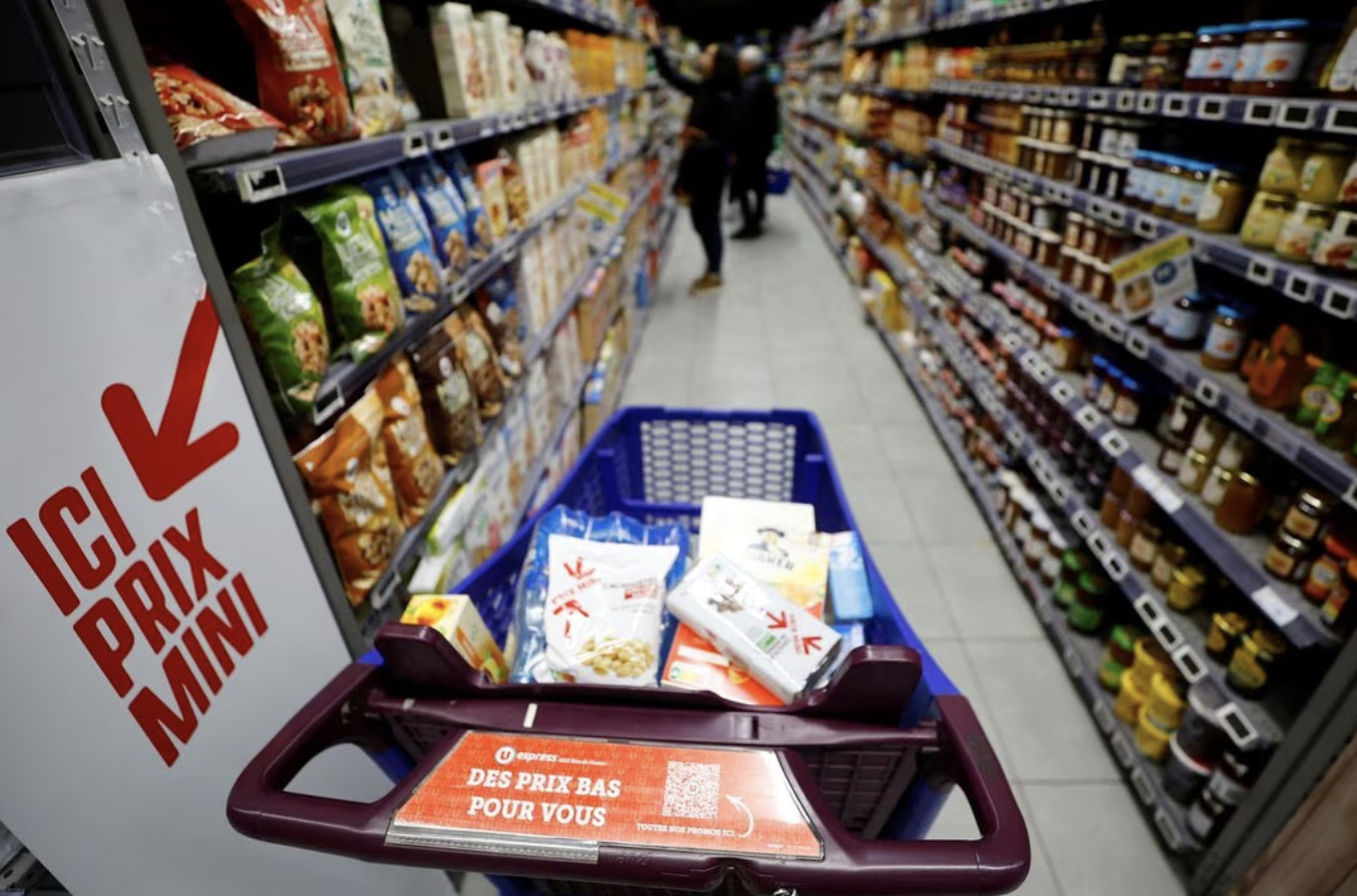European Commission Reported Eased Eurozone Inflation Yet Higher Price
A sign that says "Low prices for you" in a supermarket in Nice, France. Photo: Eric Gaillard/REUTERS
On Thursday, March 2, the European Commission's report indicated an eased inflation level in Europe from last month. However, the looming pressure on central bankers to raise interest rates still exists as the high prices have yet to show a sign of cooling down.
Record-breaking inflation and consecutive rate hikes have been hot topics in the US, but a similar story is happening worldwide. The two-decade-long 0% interest rate environment lowered the borrowing cost and created a period of rapid economic growth. However, the post-COVID world soon faced a historically high inflation rate resulting from the economic expansion policy and geopolitical instability. As a result, central bankers raised interest rates to combat the higher price, which led to potential recession globally. In Europe particularly, shrinking economic output from Britain last year foreshadowed the faltering economic growth overall, and many countries are likely to enter a recession. The good news is that several past European Commission reports showed that while the inflation level declined, economic growth has been maintained. However, on the opposite side of the heightened risk of recession is the looming high price. The report that came out last Thursday pointed out that the risk remained as the price, in particular, excluding food and energy, is putting pressure on European's daily life and policy makers' decision-making.
Consumer prices in the 20 countries that used the euro as their legal tenders faced an annual growth rate of 8.5% in February, a 1% decline from the month prior. Annually, the inflation is heading down from the absurdly high 10.6% in October, when the inflation peaked. While the Eurozone is showing signs of recovering from high prices, several major economies are still suffering from increasing inflation. For example, in France, the price index reached 7.2% in February, a record high in over two decades. Germany, the largest economy in Europe, hit an annual rate of 9.3%, while Spain saw its inflation grow from January to an annual rate of 6.1%.
Britain hit its record high inflation rate in the past 4 decades. Photo: Sam Bush/New York Times
One of the major concerns is the increasing core inflation -- an index that excludes food and energy prices due to their erratic nature -- which rose to a record high of 5.6% in February. A higher price for alcohol, tobacco, and services drove part of the higher core inflation. Businesses have continued to raise prices for their services in several sectors. "The key here is what happened to the core rate" pointed out by Melanie Debono, a senior Europe economist at Pantheon Macroeconomics. The pressure to raise wages for the workers is eating into the corporates' profit margin, and, as a result, companies increase prices faster than they used to. Additionally, a recovery effort made by the Chinese government to retake its global production presence might also be behind the high price. China's manufacturing capacity increases the demand for services, equipment, and energy. However, it's arguable whether China's manufacturing actually eases the inflation pressure by expanding supply and solving the supply chain crisis.
Despite the demand from China and the shrinking supply of energy due to the Russo-Ukrainian war, vertigo-inducing energy prices have declined, partially due to the warm winter. Food prices are dangerously high among the most erratic price categories. The aforementioned war did squeeze the global food supply, while drought in Europe, China, the Horn of Africa, and the United States resulted in smaller harvests.
Last year, most analysts pointed out that the contractionary monetary policy would lead to a recession. The economic output from the Eurozone remained high, and the risk of recession seemed overblown. On the other hand, inflation is still way beyond the 2% that central bankers are aiming for. The European Central Bank signaled that it would likely raise the interest rate by a half-point this month. Given the current economic output and rising prices, it seems we will continue to see contractionary policy for the foreseeable future. As Eswar Prasad, a trade policy professor at Cornell University, said, "the likely policy responses put a damper on the eurozone's growth prospects." Maybe the worst has yet to come, and we are still waiting for the recession, but before this, we are left with the evident high prices that 8 million Europeans are suffering from.


